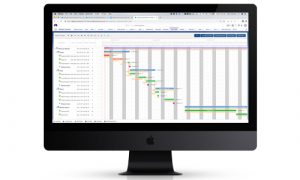The beginning of a project is the most important phase in the project management lifecycle. This is where you plan out your work, divide it into tasks, assign them to relevant team members and other project stakeholders. How well you do this could define the ultimate success of your project. Project management techniques make planning and managing projects easier and more effective. They can be applied to any project, in any industry. When used alongside project management software, these techniques can help you save time, reduce costs and streamline your projects for optimum performance.
While there are many techniques in the PM world, here are five important ones every project manager should know. Planning and organizing your work based on these techniques can help you better manage your projects and steer them to success.
Project Management Techniques;
1. Work Breakdown Structure
The first of the Project Management Techniques is logically the best place to start. Sometimes a project can seem overwhelming at first look. There’s always so much to do, and with so many people involved, it can feel confusing to figure out where to start.
A Work Breakdown Structure (WBS) will help you reign in this overwhelm, and do as the name suggests—break down the work into small, manageable chunks.
According to A Guide to the Project Management Body of Knowledge (PMBOK® Guide), WBS is “a deliverable-oriented hierarchical decomposition of the work to be executed by the project team to accomplish the project objectives and create the required deliverables. It organizes and defines the total scope of the project.”
In simple terms, this means, WBS allows you to break down the scope of the project into smaller parts. At the top, you have the final product or project deliverable. Underneath that you will have larger tasks which are your sub-deliverables, then slightly smaller tasks, and even smaller tasks—broken down until you have sort of a roadmap for your team members to follow.
So for example, if you were constructing a house, the finished house would be the final deliverable then underneath this, you would have design, work to be done inside the house (internal), outside the house (external), and building the foundation. Underneath each of these larger tasks, you’d have smaller deliverables.
You would break down work into smaller levels until you reach a point where the task can be assigned to a team member who will accomplish it.
As your project progresses, each completed sub deliverable ladders up to so you meet a larger deliverable goal and so forth. Ultimately, this will end up in you and your team achieving the final deliverable for the project.
2. Gantt Charts
A Gantt chart is one of the oldest and most well-known project management techniques. It’s a visual technique, great for beginners and pros alike.

The best way to make use of Gantt chart is to combine it with a project management tool. Mission Control can help you create and manage your Gantt charts with interactive functionality.
To get started, enter in all your data into the tool and you will get a visualization of all the tasks you have to carry out to complete the project. To really make the most of a Gantt chart, it’s helpful to create your Work Breakdown Structure first as you can then feed in this list of tasks into your chart for better visualization.
Once in the chart, you can see all your tasks, task dependencies, durations and how each task will affect your project timeline. This will help you monitor your projects better and ensure things are moving along to stay on deadline.
3. Critical Path Method
The Critical Path Method (CPM) is a cornerstone project management technique. It’s used to accurately schedule all project activities.
When using this method, what you’re doing is calculating the critical path i.e. the shortest route to project completion. Then you organize your tasks and dependencies accordingly.
You will evaluate each task to see whether it’s critical to a project or whether it has float and can be delayed, without further lengthening the project duration. It’s helpful to have a WBS handy before you get started with CPM as you’ll have a list of tasks ready to go.
CPM is best suited for more complex projects with a lot of task dependencies.
4. Waterfall/ Linear
Waterfall is one of the oldest Project Management Techniques. It’s a way to organize your tasks in a linear manner, so all activities and tasks flow—like in a line—from one phase to the next.
The five phases of Waterfall are:
- Requirements: Where you get all the necessary documentation
- Design: Where you create a list of tasks. You could use WBS.
- Implementation: Where you complete activities and tasks.
- Verification: Where you review project deliverables.
- Maintenance: Where you modify as necessary and maintain the flow.

Waterfall is great for projects that require few iterations throughout their lifecycle as it keeps things moving from one phase to the next without too many hiccups along the way.
5. Kanban
Kanban is one of the easiest project management techniques, and therefore, well suited for newbie project managers especially. It’s a visual technique whose philosophy is based around three main pillars/columns:
- To-Do
- Doing
- Done
Make a list of tasks using WBS and then simply move tasks from one column to the next as the project progresses.

Kanban can be used as a project management technique to help monitor and manage projects by putting the emphasis on continual delivery without placing too much of a burden on the team.
Mission Control’s Kanban Board feature can help you set up your projects using the Kanban technique and enable your team to work more efficiently together. Teams can get an overview of project progress, while managers get the transparency they need about their resources, and time, to ensure projects keep moving ahead per schedule.
So there you have it, the five key project management techniques every project manager should know.




